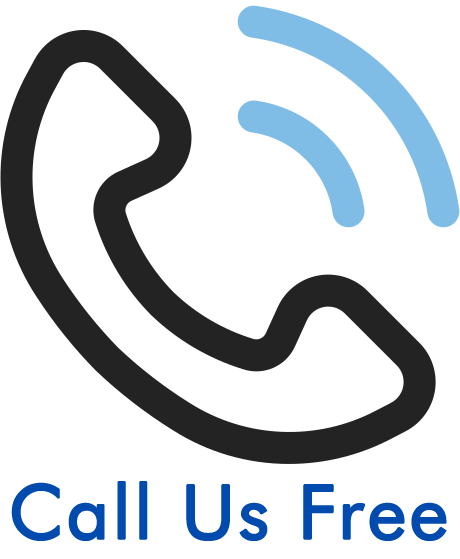A Guide On Making A Public Liability Claim
By Cat Way. Last Updated 8th August 2023. Welcome to our guide about making a public liability claim. In the following sections we will discuss topics like what a public liability claim is, how it relates to public liability insurance, and tips to keep in mind when beginning your claim.
Public liability claims may be brought in the event that an individual sustains an injury due to a hazard or risk not mitigated by a person, business, or organisation that owed that individual a duty of care. Duty of care is just one of the topics we will cover in this article, as well as legislation determining who could owe it to members of the public.

A Guide On Making A Public Liability Claim
Read on to find out more about the public liability claim you may be able to make after an accident in public. Alternatively, you can get in touch with our advisers to speak to someone about the details of your accident. Get in touch by:
- Phoning 0800 073 8804
- Use the chat icon at the bottom of the screen
- Use the claim form
Select A Section
- What Is Public Liability Insurance?
- Types Of Public Liability Claims
- Does Public Liability Cover Personal Injury Claims?
- Tips For Making A Public Liability Claim
- Public Liability Claim Settlement Calculator
- Talk To Us About Making A Public Liability Claim
What Is Public Liability Insurance?
Public liability insurance is a type of insurance that provides financial cover for individuals, businesses and organisations whose business comes into contact with members of the public. It is intended to cover them in case one of those people is injured due to negligence.
In order to make a public liability compensation claim, you must be able to show your injuries occurred due to a breach in the duty of care that is owed to members of the public when on publicly accessible premises. This involves showing three criteria are true:
- The ‘occupier’ of a space owed you a duty of care. We will discuss what an occupier is later in this article.
- The occupier breached their duty of care.
- As a result of this breach, you sustained harm in the form of a mental or physical injury.
Showing all of these factors are true means that you were injured because the occupier failed to adhere to the applicable health and safety legislation. This is required for making a public liability claim. To find out more, contact our advisers today.
Types Of Public Liability Claims
You may be able to claim against a business or organisation for several kinds of accidents. For example:
- Falls in a shop
- Accidents in public places, such as falling on uneven pavements
- Falls in buildings caused by inadequate lighting conditions
- A slip, trip or fall in a car park that hasn’t been gritted against ice
You can have different types of accidents while out in public that cause a variety of injuries, such as slips, trips, and falls on an icy pavement that could lead to a broken hip or sprained ankle. Or falling down the stairs in a multi-story car park could lead to a serious head injury, in addition to other injuries.
If you have questions about who could be liable for the injury you suffered while out in public, contact us today. Our advisers could help you begin making a public liability claim.
Does Public Liability Cover Personal Injury Claims?
There are certain pieces of legislation that determine which parties owe a duty of care to others. The Occupiers’ Liability Act 1957 states that the person in control of a space, called the ‘occupier’, owes a duty of care to all legal visitors who use that space for its intended purpose.
You may also be able to claim against an organisation’s employer’s liability insurance. The Health and Safety at Work etc. Act 1974 states that employers owe a duty of care to their employees and others who may be visiting the workplace. They must also take reasonable steps to reduce or remove any hazards.
To be eligible to make a personal injury claim, you must be able to demonstrate that you were injured due to a breach of the duty of care owed to you. This is called negligence.
Contact our advisers today to learn more about making public liability claims.
Tips For Making A Public Liability Claim
One of the most important aspects of making a personal injury claim is collecting evidence. Evidence is crucial to your claim, as it can help prove that someone else was liable for your injuries and can also show how the severity of your injuries will impact your life.
Some examples of evidence that you could use to help strengthen your public liability claim include:
- CCTV footage: If your accident was caught by a CCTV system, you may be able to request the footage. This could then help illustrate how your accident occurred.
- Photographs: Taking photographs of your injuries can help demonstrate their severity. Similarly, taking photographs of the accident site creates a permanent record of how your accident occurred.
- Medical records: Your medical records can also help provide insight into your injuries and their severity. If you choose to work with a solicitor, they may arrange for an independent medical assessment.
- Witness statements: While you cannot collect witness statements yourself, you can collect the contact details of potential witnesses. This allows their statements to be taken by a professional at a later date.
If you choose to work with a solicitor on your claim, they can help you collect this evidence. One of the benefits of working with one of our solicitors is that they work with claimants from across the country, meaning that you aren’t limited to choosing a local legal professional.
Contact our team of advisors today to learn more about public liability claims and to find out how one of our solicitors could help you.
Public Liability Claim Settlement Calculator
Should your public liability claim be successful, you will be awarded general damages to compensate you for the harm your injuries have caused you. Additionally, some claimants also qualify for special damages. These damages are to recompense for any costs, past or future that have resulted from your injuries.
The Judicial College Guidelines comprise a list of injuries, all different severities and reflective compensation brackets. This is the document that a personal injury solicitor will usually turn to when assessing general damages. We have included some compensation brackets with their qualifying injuries in the table below.
| Injury Type | Compensation Bracket | Notes |
|---|---|---|
| Severe Neck Injury (a) (i) | In the region of £148,330 | Injuries associated with incomplete paraplegia, spastic quadriparesis, or little to no movement in neck despite constant wearing of collar. |
| Severe Knee Injuries (a) (i) | £69,730 to £96,210 | Disruption of the joint combined with osteoarthritis, ligament damage, considerable pain and lengthy treatment. |
| Moderate Knee Injuries (b) (i) | £14,840 to £26,190 | Injuries involving dislocation, minor instability caused by torn cartilage, weakness or other mild future disability. |
| Hand Injuries (b) | £55,820 to £84,570 | Serious damage to both hands, giving rise to permanent cosmetic or functional disability. |
| Other Arm Injuries (b) | £39,170 to £59,860 | Injuries that result in serious and permanent disability. |
| Other Arm Injuries (c) | £19,200 to £39,170 | Significant disabilities that nevertheless show a substantial amount of recovery. |
| Less Severe Leg Injuries (c) | £17,960 to £27,760 | Serious soft tissue injury or fractures that make an incomplete recovery. |
| Serious Shoulder Injuries (b) | £12,770 to £19,200 | Dislocation and damage to the nerve network. Resulting pain in elbow, weakness of grip, and sensory symptoms in arm and hand. |
However, the amount of compensation you could receive may differ from the figures shown above, as the JCG doesn’t account for special damages.
Special damages may be paid out in order to recompense you for the financial losses you may have suffered due to your injury. For example, they may help you recoup:
- Loss of earnings
- Loss of future earnings
- Travel costs, such as when getting to and from the hospital
- Medicines and rehabilitation
Talk To Us About Making A Public Liability Claim
If you are thinking about making a public liability claim, it may be a good idea to seek legal advice. Our advisors can provide free legal advice on any personal injury claim. When they can see that your public liability claim has a good chance of being awarded compensation, they can connect you with our expert personal injury solicitors.
A Conditional Fee Agreement (CFA) can often be offered when claims are taken on. Under a CFA, generally, you will not be required to pay anything upfront for the solicitor to begin legal proceedings. When a claim is successful, a success fee capped by law is taken from the amount awarded. If the claim is unsuccessful, then you do not have to cover this success fee.
If you have more questions about making a public liability claim, contact us today. The consultation is free, and afterwards, there isn’t any obligation to carry on using our services. To learn more, contact us by:
- Phoning 0800 073 8804
- Use the chat icon at the bottom of the screen
- Use the claim form
Learn More About Making A Public Liability Claim
Claim guides you may find useful:
Personal injury compensation time limits explained
The personal injury claims process
How much compensation for a gym accident claim
Other useful resources:
How To Claim Compensation A Gov.UK Guide.
Diagnosing A Borken Bone Guide From The NHS
Employers’ Liability (Compulsory Insurance) Act 1969
We hope this guide about making a public liability claim has been useful. If you would like to know more, get in touch using the details above.


